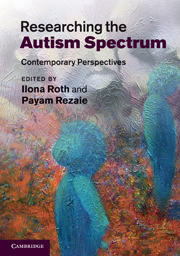1 - Early assessment and diagnosis of children
Published online by Cambridge University Press: 04 February 2011
Summary
Autism is an organic neurodevelopmental disorder, the prototypical disorder of the group of conditions known as the pervasive developmental disorders. Genetic findings and general population studies indicate that these types of disorders (commonly referred to as Autism Spectrum Disorders (ASD) or more recently Autism Spectrum Conditions (ASC)), probably occur along a broad continuum of severity. This spectrum of presentations include those individuals with a definable disorder and clear evidence of social impairment and incapacity, qualitatively similar behavioural characteristics in other family members (described as the broader autism phenotype), and a range of more subtle social, communicative and repetitive behaviours in the general population. ASD are no longer considered rare, with a replicated reported prevalence of approximately 1 in 100. With increasing public and professional awareness and an emphasis on the importance of both early recognition and access to so-called ‘early interventions’, there is an expectation of early identification, assessment and diagnosis. This chapter will review the evidence for ASD, the epidemiology and prevalence of these disorders and consider (using the framework of the National Autism Plan for Children) a range of assessment and diagnostic procedures including the use of the best estimate clinical diagnosis for clinical and research practice. Inevitably, the purpose of assessment informs the format and content of the diagnostic process. The chapter will conclude by considering some current diagnostic challenges.
- Type
- Chapter
- Information
- Researching the Autism SpectrumContemporary Perspectives, pp. 19 - 50Publisher: Cambridge University PressPrint publication year: 2011
References
- 2
- Cited by

